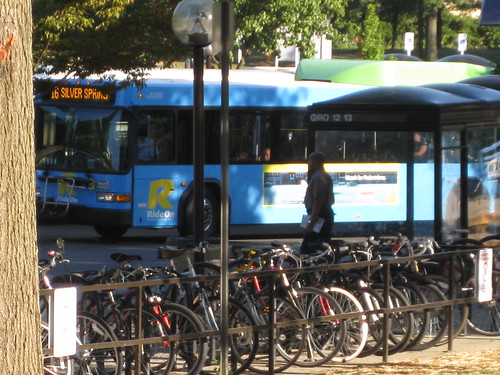None other than Secretary of Transportation Ray Lahood is getting on the smartphone apps bandwagon. The apps are providing transit riders in many places with real-time information. But not enough places, according to the Secretary.
In fact, a review of 276 transit agency systems revealed that only 45 of them provide some information on mobile devices. And of those 45 agencies, only 15 offered their riders the real-time information precise planning requires.For more information, visit the Fastlane.
We think we can do better for our nation's transit riders. So last week, Deputy Secretary John Porcari and U.S. Chief Technology Officer Aneesh Chopra gathered a variety of stakeholders to see what we can do to help millions more transit riders get better access to information.
Some transit agencies want to share this information with their customers, but lack the resources. So one of the challenges for the folks around the table was to find a way to reduce the cost of providing the data in a format that can make riders' lives easier.
Amalgamated Transit Union
ATU is featuring on its homepage links to articles with depressing news for transit workers and for public transportation - attacks against bus drivers and transit equipment.
[Buses and bikes at the Takoma Metro station, which serves the Washington,DC/Maryland border community.]
American Association of State Highway and Transportation Officials
AASHTO's President is praising rail performance around the country. Systems in Virginia and Michigan, as examples, have recently delivered service to double the riders they had a few years ago. "Ridership on Amtrak's many long-distance lines are at all-time highs, ... From October 2010 to September 2011, more than 30 million trips were recorded on America's intercity passenger rail lines." More from AASHTO President John Horseley's post about rail in the AASHTO Journal.
American Bus Association
The ABA presents an update to its advocacy for the past few years that Congress should save money and fund essential bus service to rural residents far from airports. In a report issued in the fall, Keeping Rural Communities Connected: Comparison of EAS Program To Coach Bus Service, ABA "compares the cost and environmental impact of current subsidized air service provided to rural communities under the Essential Air Service (EAS) program, to an alternative method of connecting these rural communities to the nationwide air transport system." Costs for bus transportation would be almost 70 percent cheaper than EAS currently funded. However, travelers would spend more time en route were bus service to replace EAS, though two-thirds would only need an hour or less of extra time to reach their destinations.
According to ABA's data:
The use of scheduled coach bus service instead of air service would also reduce annual fuel use by 5.7 million gallons, would reduce annual CO2 emissions by over 63,000 tons, and would reduce annual emissions of NOx, HC, CO, and SO2 by 13.2 tons, 1,186 tons, 2,066 tons, and 27.8 tons respectively.ABA also makes the case that buses could operate profitably on most of these routes, after initial expenses, whereas EAS is heavily subsidized. The report includes details about the methodology and assumptions that produced its conclusions.
[California landscape from Amtrak's Coast Starlight train.]



The apps for local trips and long distance travelling is given here. You have given us useful information
ReplyDeleteInteresting post and thank you for sharing. There are things here that I did not think before.Thanks to cool such a position that is very well written.
DeleteThanks for one’s marvelous posting! I truly enjoyed reading it, you are a great author.I will be sure to bookmark your blog and may come back from now on.
Delete